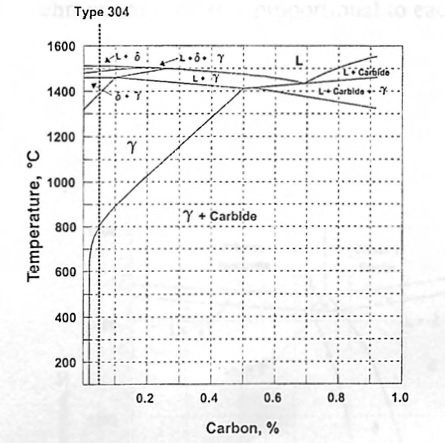JABP123
Materials
- Jun 15, 2017
- 7
I have been working with two types of stainless steels, one austenitic and another ferritic at room temperature, 304 and 446 respectively. They were Rapid Solidified by melt extraction process.
I noticed that they have two completly different thermal expansion values:
304 - around 20x10-6/ºC at 890ºC
446 - around 13x10-6/ºC at 890ºC
I have been trying to find a reason to explain this different values and the only thing I found is that lattice parameters play a role in this thermal expansion coefficients since ferrite(alpha) lattice at 912ºC is 2.895 and austenite is 3.637. Is this the only reason for this variation? If so, why exacly having a bigger lattice means higher thermal expansion coefficient?
Hoping you guys can point me in the right direction.
Kindly,
John
I noticed that they have two completly different thermal expansion values:
304 - around 20x10-6/ºC at 890ºC
446 - around 13x10-6/ºC at 890ºC
I have been trying to find a reason to explain this different values and the only thing I found is that lattice parameters play a role in this thermal expansion coefficients since ferrite(alpha) lattice at 912ºC is 2.895 and austenite is 3.637. Is this the only reason for this variation? If so, why exacly having a bigger lattice means higher thermal expansion coefficient?
Hoping you guys can point me in the right direction.
Kindly,
John

